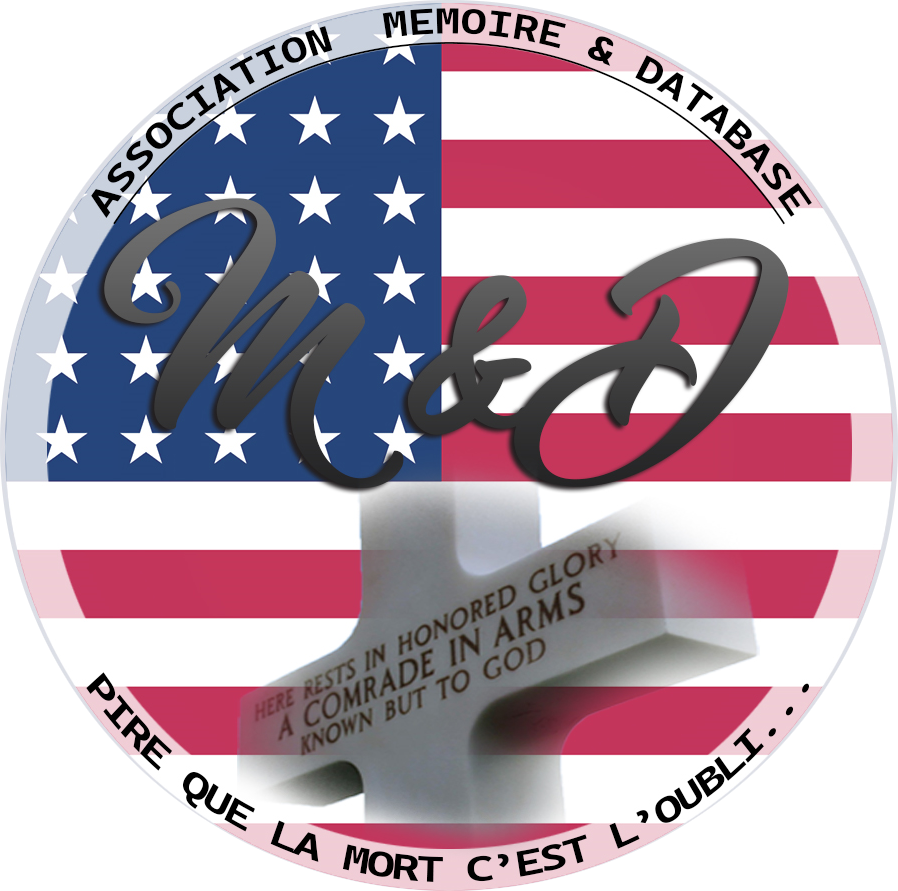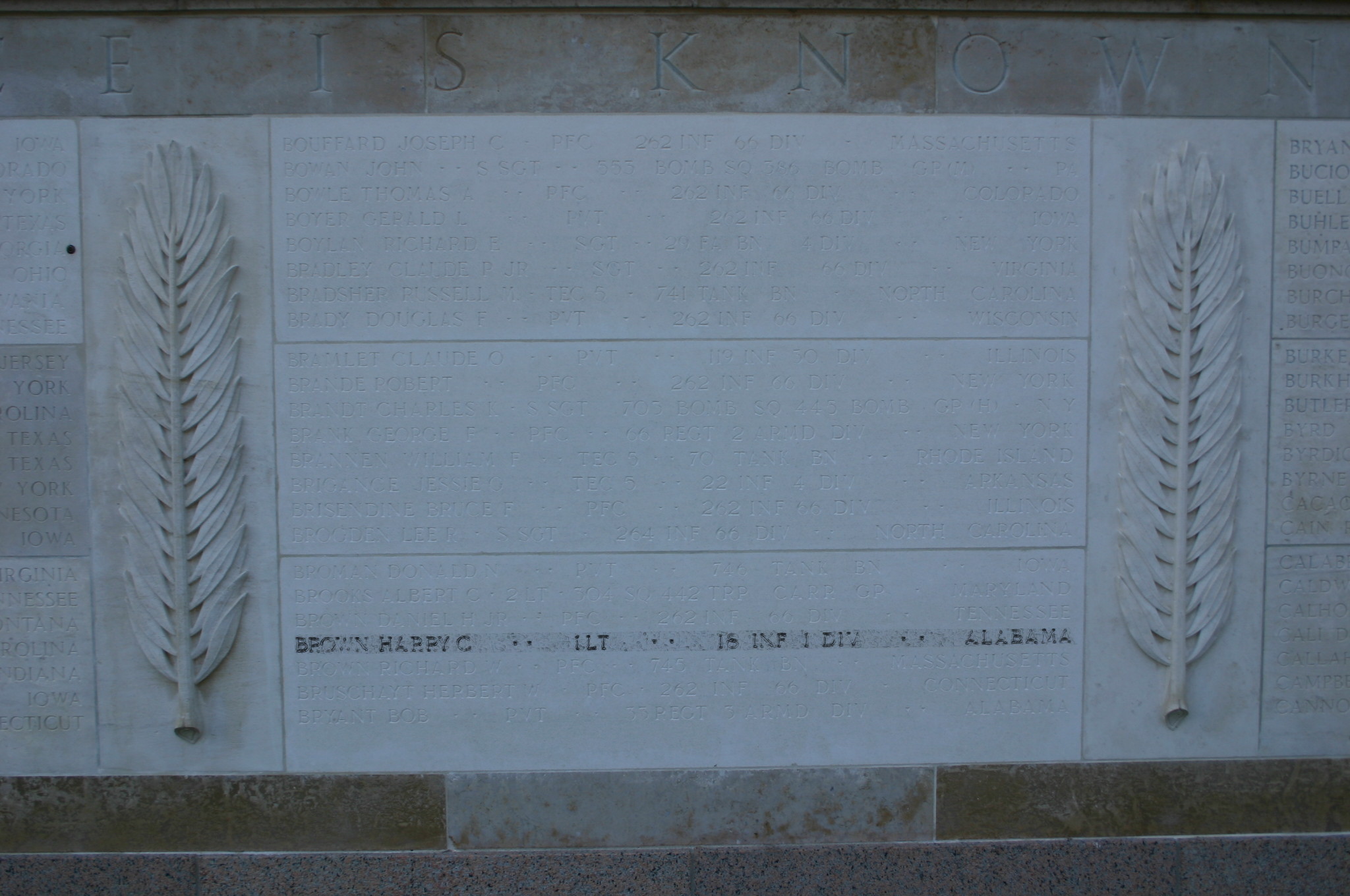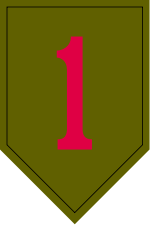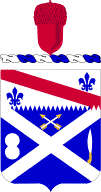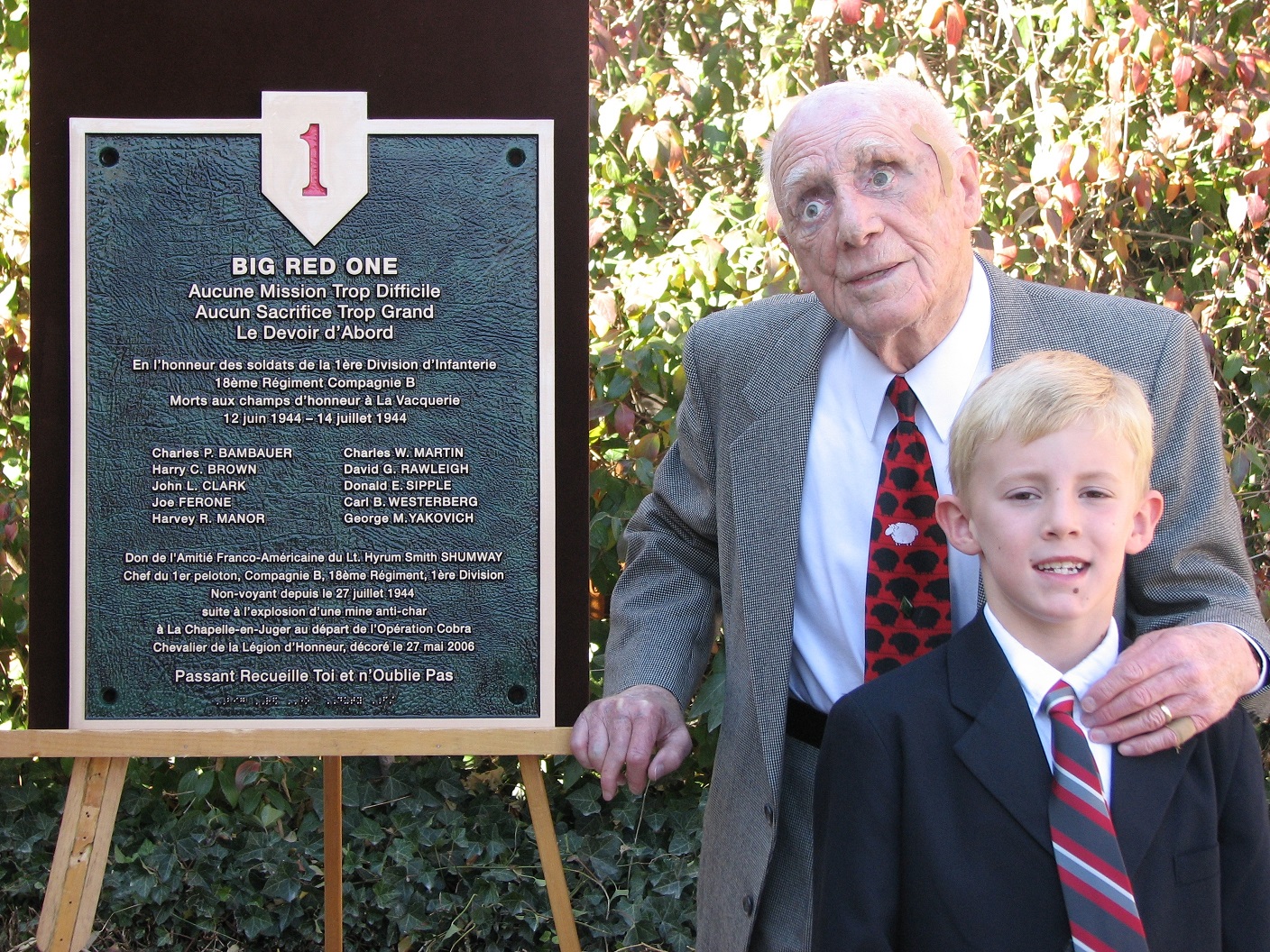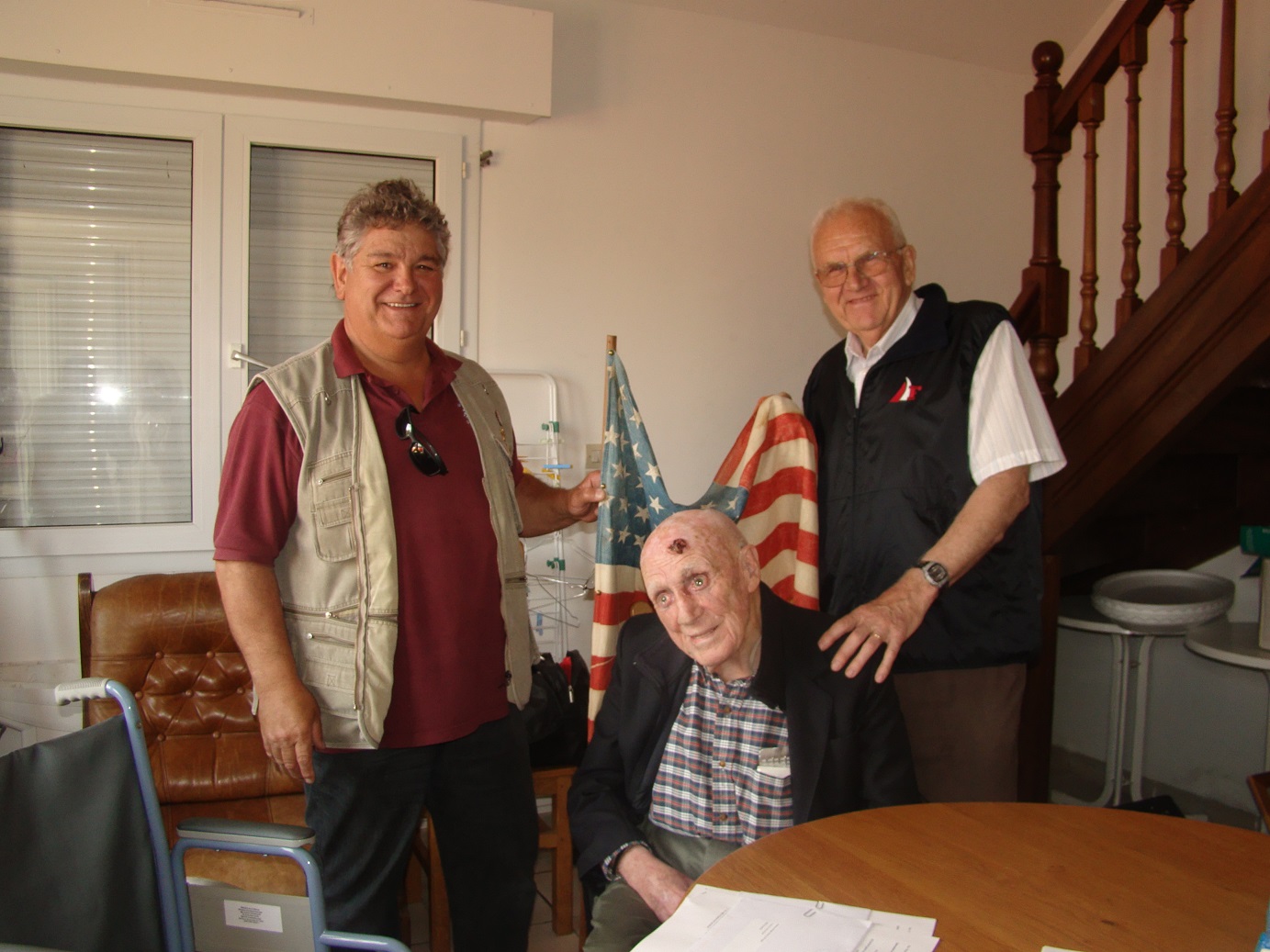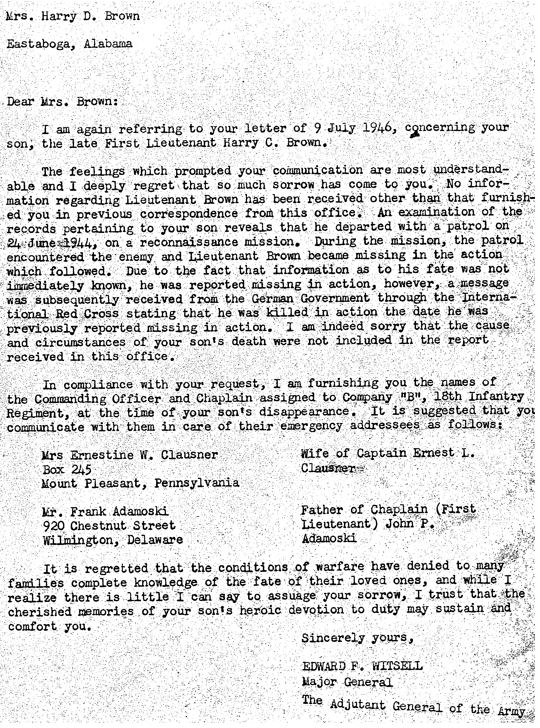|
Harry Cooper BROWN
| ||||||||||||||||||||||||||||
|---|---|---|---|---|---|---|---|---|---|---|---|---|---|---|---|---|---|---|---|---|---|---|---|---|---|---|---|---|
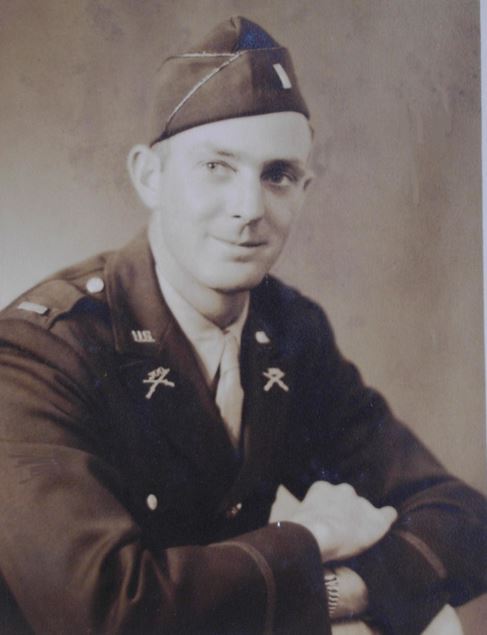 | ||||||||||||||||||||||||||||
| ARMY SERIAL NUMBER | O-1304010 | |||||||||||||||||||||||||||
| AGE | 29 yo | |||||||||||||||||||||||||||
| DATE OF BIRTH | 1914 ALABAMA | |||||||||||||||||||||||||||
| STATE | Talladega ALABAMA | |||||||||||||||||||||||||||
| FAMILY |
Married A son | |||||||||||||||||||||||||||
| RANK | 1st Lieutenant | |||||||||||||||||||||||||||
| FONCTION | Infantry Tactics Instructor at Fort Benning GEORGIA | |||||||||||||||||||||||||||
| JOB before ENLISTEMENT |
Electrician |  | ||||||||||||||||||||||||||
| DATE of ENLISTEMENT | 25 february 1941 Fort Mc Clellan ALABAMA | |||||||||||||||||||||||||||
| COMPANY | Company B | |||||||||||||||||||||||||||
| REGIMENT | 18th Infantry Regiment | |||||||||||||||||||||||||||
| DIVISION | 1st Infantry Division "Big Red One" | |||||||||||||||||||||||||||
| DATE OF DEATH | 24 june 1944 |
Source : F Lavernhe | ||||||||||||||||||||||||||
| STATUS | KIA | |||||||||||||||||||||||||||
| PLACE OF DEATH | La Vacquerie (Caumont l'Eventé) | |||||||||||||||||||||||||||
| CEMETERY | NORMANDY AMERICAN CEMETERY de Colleville | |||||||||||||||||||||||||||
| GRAVE |
| |||||||||||||||||||||||||||
| DECORATION |
| |||||||||||||||||||||||||||
| ||||||||||||||||||||||||||||
| STORY | ||||||||||||||||||||||||||||
|
John BENNION & Michel QUILES (Président of the association Amitié Franco-Américaine - Men of D-Day)
It is quite possible that he died on that date. The few inhabitants who were present at the time at La Vacquerie, following an appeal to the population by the mayor in 2006, testified by reporting that a body had been seen naked on a stretcher, coming out of a barn at La Vionnière, which was used as an infirmary, and GI’s clothes were found on a pile of manure nearby. Specifically, the story of his disappearance follows a night patrol led by Lt. Smith SHUMWAY of the 1st ID, Big Red One 18th IR, Company B, in the No Man's Land Village of La Haie, south of La Vacquerie. n relative safety, they realized that Lt. Harry C. BROWN, dressed in peasant-style civilian clothes, was missing. The patrol left to find him, wounded, dead or alive, but they found themselves under the German Machine Gun fire again, and returned to their entrenchment dug in a field close to a farm in the village of La Haie. his trench had been repaired after the war and we found its exact location with a GPR in 2009. In fact the Lt. Harry C. BROWN, would have been wounded and captured in plain clothes thus believed to be a spy, tortured at La Vionnère, more or less tended to at La Vionnière, returned to La Vionnière, since a female inhabitant of the hamlet heard a man scream. That’s where he would have died and been buried naked around Le Clos Mesnil.
| ||||||||||||||||||||||||||||
|
Smith SHUMWAY with his grandson William BENNION MURDOCK, this tall, unseen gentleman following war wounds received on July 24, 1944, the departure day of the Breakthrough, following Operation Cobra. He jumped during the explosion of the tank which he was protecting between La Chapelle en Jugé and the German cemetery of Marigny. Smith was dcd in St Louis (MISSOURI) on March 24, 2011. Michel QUILES - Smith SHUMWAY - Hyppolyth VAUCLAIR | ||||||||||||||||||||||||||||
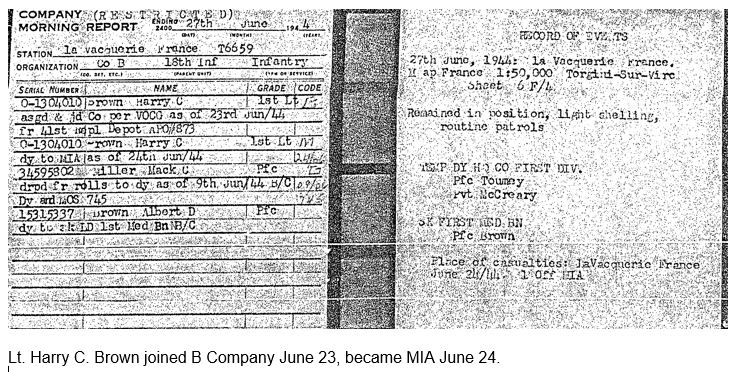 | ||||||||||||||||||||||||||||
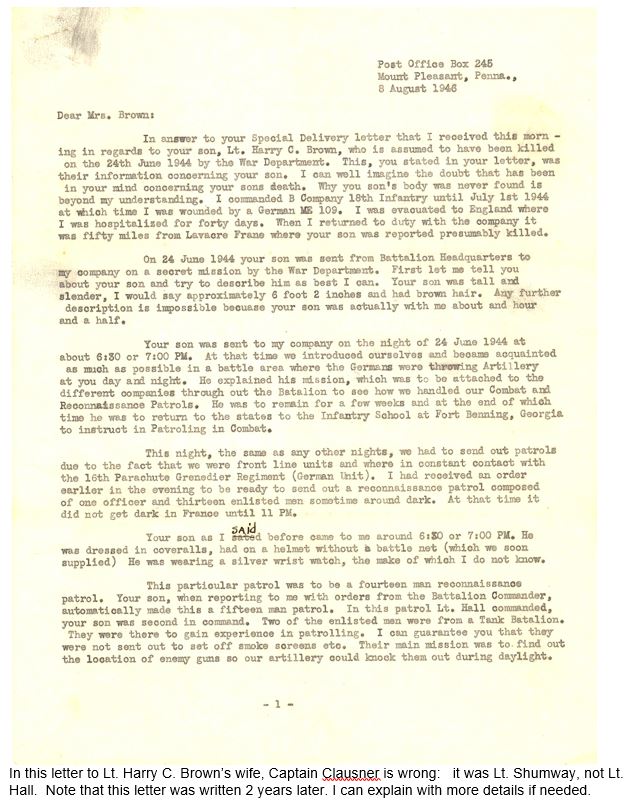 |  |  | ||||||||||||||||||||||||||
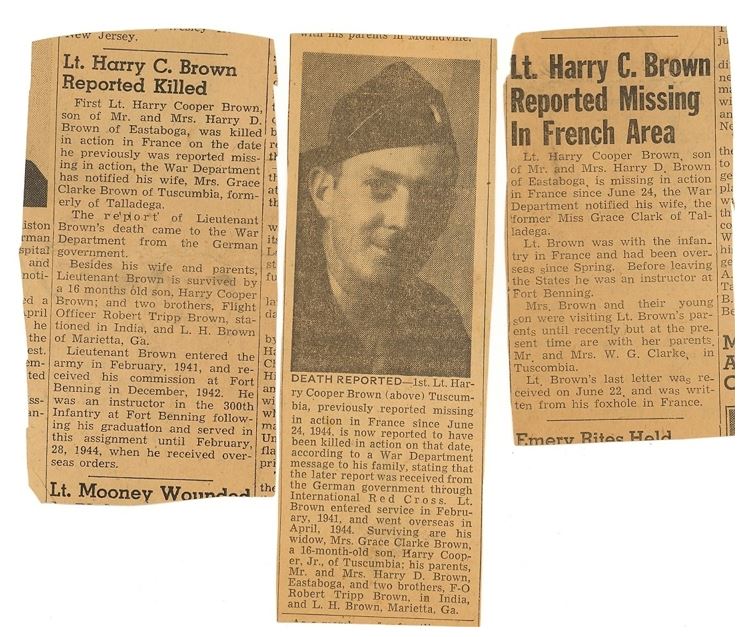 | 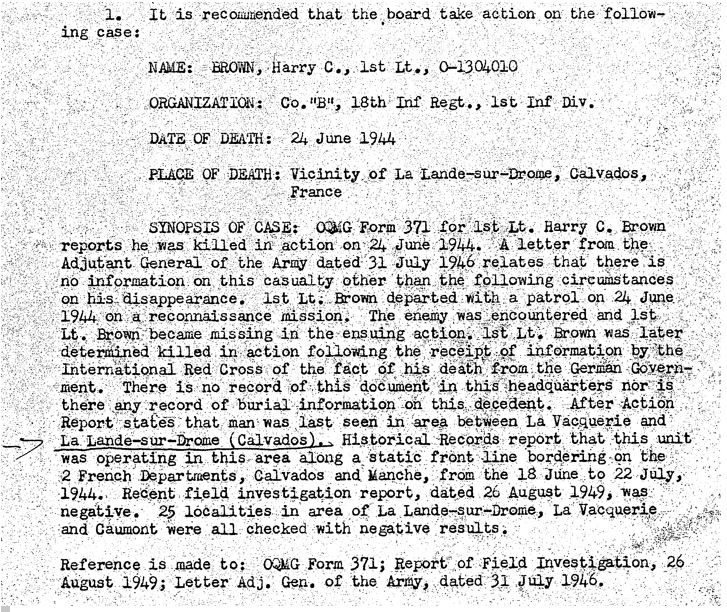 | |||||||||||||||||||||||||||
Activated/Activé |
Normandy/Normandie |
| 17 Jun 1917 | Days of Combat/Jour de Combat 443 |
| Casualties/Victimes 20 659 | |
Entered Combat/Entré au combat |
|
| 8 Nov 1942 North Africa | |
|
Commanding Generals/Commandants généraux Maj. Gen. Donald Cubbison (Feb 41 - Aug 42) |
Campaigns/CampagnesAlgeria-French Morocco (8 Nov 42 - 11 Nov 42)
|
PLAN DE ROUTE DE LA CAMPAGNE de MEDITERANNEE - CAMPAIGN ROUTE MAP |
|
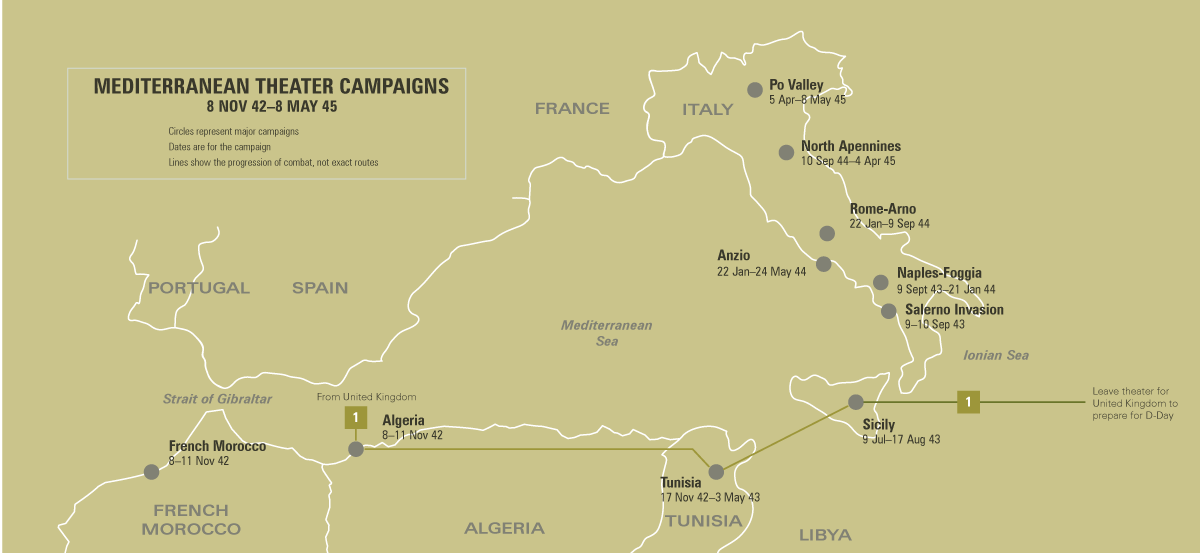 |
|
PLAN DE ROUTE DE LA CAMPAGNE - CAMPAIGN ROUTE MAP |
|
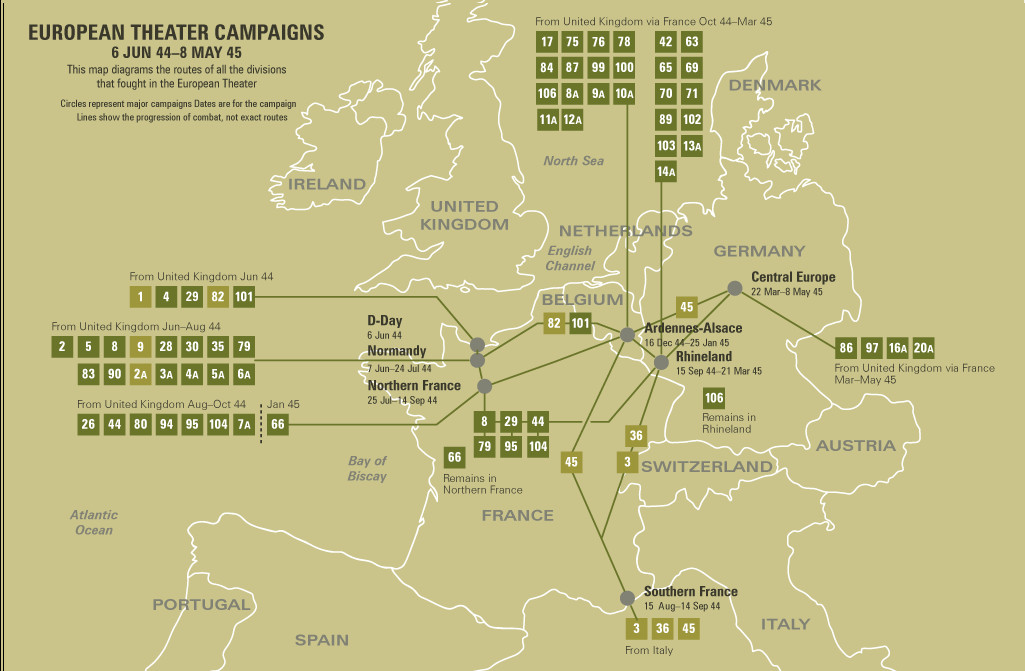 |
|
DIVISION CHRONICLEThe 1st Infantry Division saw its first combat in World War II in North Africa, landing at Oran and taking part in the initial fighting, 8-10 November 1942. Elements then took part in seesaw combat at Maktar, Medjez el Bab, Kasserine Pass, Gafsa, El Guettar, Beja, and Mateur, 21 January-9 May 1943, helping secure Tunisia. The First was the first ashore in the invasion of Sicily, 10 July 1943 ; it fought a series of short, fierce battles on the island's tortuous terrain. When that campaign was over, the Division returned to England to prepare for the Normandy invasion. The First Division assaulted Omaha Beach on D-day, 6 June 1944, some units suffering 30 percent casualties in the first hour, and secured Formigny and Caumont in the beachhead. The Division followed up the St. Lo break-through with an attack on Marigny, 27 July 1944, and then drove across France in a continuous offensive, reaching the German border at Aachen in September. The Division laid siege to Aachen, taking the city after a direct assault, 21 October 1944. The First then attacked east of Aachen through Hurtgen Forest, driving to the Roer, and moved to a rest area 7 December for its first real rest in 6 months' combat, when the von Rundstedt offensive suddenly broke loose, 16 December. The Division raced to the Ardennes, and fighting continuously from 17 December 1944 to 28 January 1945, helped blunt and turn back the German offensive. Thereupon, the Division attacked and again breached the Siegfried Line, fought across the Roer, 23 February 1945, and drove on to the Rhine, crossing at the Remagen bridgehead, 15-16 March 1945. The Division broke out of the bridgehead, took part in the encirclement of the Ruhr Pocket, captured Paderborn, pushed through the Harz Mountains, and was in Czechoslovakia, at Kinsperk, Sangerberg, and Mnichov, when the war in Europe ended.
|
CHRONIQUE DE DIVISIONLa 1ère Division d'infanterie vit son premier combat en Afrique du Nord lors de la Seconde Guerre mondiale, débarquant à Oran et prenant part aux combats initiaux, du 8 au 10 novembre 1942. Les éléments participèrent ensuite aux combats en balançant à Maktar, Medjez el Bab, Col de Kasserine, Gafsa, El Guettar, Beja et Mateur, du 21 janvier au 9 mai 1943, contribuant à la sécurisation de la Tunisie. Le premier a été le premier à terre dans l'invasion de la Sicile, le 10 juillet 1943; il a combattu une série de batailles courtes et féroces sur le terrain tortueux de l'île. Quand cette campagne fut terminée, la Division revint en Angleterre pour se préparer à l'invasion de la Normandie. La première division a attaqué Omaha Beach le jour J, le 6 juin 1944, certaines unités subissant 30% de pertes au cours de la première heure et sécurisant Formigny et Caumont dans la tête de pont. La Division a suivi la percée de Saint-Lô avec une attaque sur Marigny, le 27 juillet 1944, puis a traversé la France dans une offensive continue, atteignant la frontière allemande à Aix-la-Chapelle en septembre. La Division a assiégé Aix-la-Chapelle après un assaut direct, le 21 octobre 1944. Le Premier a ensuite attaqué à l'est d'Aix-la-Chapelle par Hurtgen Forest, jusqu'à la Roer, et s'est installé dans une aire de repos le 7 décembre pour son premier repos. combat de mois, quand l'offensive de von Rundstedt se déchaîna subitement, le 16 décembre. La division a couru vers les Ardennes, et combat continuellement du 17 décembre 1944 au 28 janvier 1945, a aidé à émousser et à retourner l'offensive allemande. La Division attaqua de nouveau la ligne Siegfried, traversa la Roer, le 23 février 1945, et se dirigea vers le Rhin, traversant la tête de pont de Remagen, du 15 au 16 mars 1945. La division sortit de la tête de pont. dans l'encerclement de la poche de la Ruhr, capturé Paderborn, poussé à travers les montagnes du Harz, et était en Tchécoslovaquie, à Kinsperk, Sangerberg et Mnichov, lorsque la guerre en Europe a pris fin.
|
| SOURCE INFORMATION & PHOTO | Armydivs.squarespace.com |
|---|
| INFORMATION SOURCE | Mitch QUILES - John BENNION - Abmc.gov - Aad.archives.gov |
|---|---|
| PICTURE SOURCE | Frédéric LAVERNHE - Findagrave.com |
| PROGRAMMER | Frédéric & Renaud |


